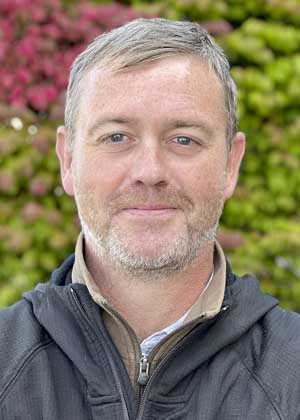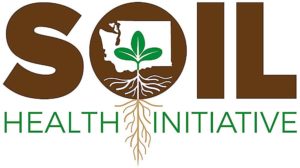Washington’s soil health initiative started to amalgamate in 2019, and with full funding of $2.1 million a year coming online last year, the state entered into a dramatic paradigm shift in the resources it invests in soil health research, outreach and incentive programs.
Virtually overnight, the effort places Washington state as one of the preeminent leaders in state-supported soil health activities. It creates the most densely concentrated network of long-term agroecological experiment sites serving major crop systems and incentivizes landowners to take on soil health practices.
This big-picture effort is led by three state agencies, each with a unique and complementary role:
The Washington State Conservation Commission will lead outreach efforts and incentive adoption of recommended practices through the Sustainable Farms and Fields Grant Program, once fully funded. The Washington State Department of Agriculture will track and demonstrate progress of the effort, as well as navigate regulatory programs. Washington State University’s role was to develop a soil health roadmap (which we published last year) and, in the bigger picture, lead longer-term efforts to drive research and information dissemination. The three agencies work in concert.
The Washington state soil health roadmap, available at: soilhealth.wsu.edu/washington-state-soil-health-roadmap, is a document with over 100 pages outlining what we know about soil health in the state’s 14.6 million acres of agricultural land and what we hope to learn through this project.

Because Washington is home to such a diversity of agricultural systems, we divided the state into eight focused areas: tree fruit; juice and wine grapes; dryland agriculture in Eastern Washington; irrigated potato production; other irrigated systems in the Columbia Basin; annual cropping in Northwest Washington; Western Washington’s diversified cropping systems; and environmental community approaches to soil health.
We utilized existing resources to document a variety of things for each zone, such as the goals for each production system and the challenges. What needs to change? Each zone is led by a member of the WSU team.
For tree fruit, for example, growers reported soil health concerns including fruit nutrition problems such as bitter pit, replant disease and low yields. While there is great interest in the relationship between the soil microbiome and fruit production, growers have to contend with knowledge gaps around what constitutes a healthy soil for fruit production and how soil health boosting practices correlate to fruit quality outcomes, measured by packouts and fruit storage. Goals include understanding the economics of soil health practices and which soil health testing metrics to use in perennial fruit crops. The effort in tree fruit is led by WSU Extension specialist Tianna DuPont.
The roadmap is a living document, by design. When we change goals and milestones, we’re going to update this document online.
We have also started a “State of the Soil” assessment. Working together, WSU and WSDA have begun tracking soil health over time across the variety of production systems in the state. The assessment includes 400 commercial fields representing 20 cropping systems, to provide a baseline to get the state of the state. The long-run goal is to monitor that and see if we are making incremental changes and improvements.
Another key aspect of the initiative is the establishment of long-term agroecological research and extension sites (LTAREs). We recognize that most research today receives short-term funding, but the changes we see in soils take time. That’s why the core of the initiative is funding for LTAREs in Washington. The sites are located on WSU property, so that we have more certainty about the longevity necessary to document soil health changes that play out.
The sites represent major cropping systems and are being planned with input from industry advisory groups.
In 2022, we are starting to move forward on four sites: a Northwest Washington diverse rotation in Mount Vernon that has already been initiated; an organic Western Washington diversified production system; a tree fruit system in Wenatchee; and a wine grape vineyard in Prosser. We hope to bring on basin potato rotation and dryland sites soon.
The initiative’s Sustainable Farms and Fields program will provide resources for incentivizing adoption and change at the landscape level. This program was supplied with resources to initiate and scope the program, but no state funds to actually run the program have been assigned.
So how will we measure success? Of course, it will vary by region and production system. Each zone has very different sets of goals and milestones. We need a flexible ability to offer success for a statewide area. That’s why it took 100 pages to draw out our roadmap.
—by Chris Benedict
Chris Benedict is a regional extension specialist with Washington State University based in Whatcom County and the university’s lead on the Washington State Soil Health Initiative. He can be reached at: chrisbenedict@wsu.edu.







Leave A Comment